Thanks, Click! Recently I've had more free time and I'm trying to put it to good use.Beautiful shots!
Upvote
0
Thanks, Click! Recently I've had more free time and I'm trying to put it to good use.Beautiful shots!
Great photos. But the Mallard close-up is just great.He was joined by a rather coy Mallard...
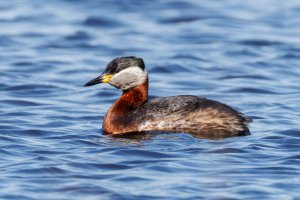
It's a bit of a dilemma for me. For small birds at a distance, which is most common for me, the 200-800 wins out. But, for insects close up and BIF, the 100-500 wins. I am off to the Farne Islands next month for Puffins, which fly fast and close, and I'll take the 100-500 for that trip to the islands but probably the 200-800 as well for walking around the mainland coast.Finally I received my RF 200-800mm last week. I think only 20 lenses or less has been delivered to Sweden so far.
It is not so that I don't like my trusty old RF 100-500L, but as I not predominantly am a "Birdphotographer" hiding in sheds, but rather a "walking around" birdwatcher who likes to take some pictures as well, I often end up with my birds at some distance. Then the 100-500mm I have quite often, especially with smaller sized birds, don't use up that much megapixels on my R5 sensor.
Enter my new RF 200-800. Yesterday I took some hand-held pictures of a Red-necked grebe. Technical data: R5, ISO 1600, f9.0, 1/2500s, 800mm.
I used DxO PureRAW 4 and LrC for the final picture
View attachment 216512
Congrats and enjoy. I am using mine a good amount. It is a very useful lens.Finally I received my RF 200-800mm last week. I think only 20 lenses or less has been delivered to Sweden so far.
It is not so that I don't like my trusty old RF 100-500L, but as I not predominantly am a "Birdphotographer" hiding in sheds, but rather a "walking around" birdwatcher who likes to take some pictures as well, I often end up with my birds at some distance. Then the 100-500mm I have quite often, especially with smaller sized birds, don't use up that much megapixels on my R5 sensor.
Enter my new RF 200-800. Yesterday I took some hand-held pictures of a Red-necked grebe.
Thanks ISv, S lapwings are making slow but steady approach to North America.It was first seen in Costa Rica in 1997, being South America native. Now, can be easily found in the south of Mexico and there are sightings around Rio Grande, US-Mexico border.My favorite is the photo of the Southern Lapwing! What happen with the photo of the White Ibis - you forget to denoise it?
If it were due to rolling shutter both wings would be equally affected, as the bird is almost symmetrical left to right.I was wondering about this too
Some more photos from Labour Day, This time with my R6m2 again, thankfully.Family Canada goose are there now, too... They've got 5 goslings.
200D, 100-400L II, oh, I start to really hate that ol' 9 digit diamond AF, The lower AF point was always directly on the centre gosling. Meh!
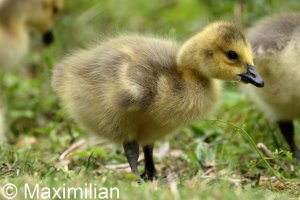
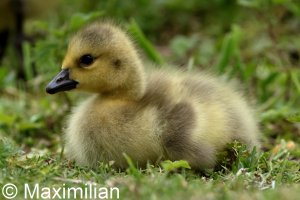
Beautiful shot!Enter my new RF 200-800. Yesterday I took some hand-held pictures of a Red-necked grebe. Technical data: R5, ISO 1600, f9.0, 1/2500s, 800mm.
I used DxO PureRAW 4 and LrC for the final picture
Medicinal use gummies!Great photos. But the Mallard close-up is just great.
How did you get the model to make that pose?
I wish you a nice trip and happy photo hunting!It's a bit of a dilemma for me. For small birds at a distance, which is most common for me, the 200-800 wins out. But, for insects close up and BIF, the 100-500 wins. I am off to the Farne Islands next month for Puffins, which fly fast and close, and I'll take the 100-500 for that trip to the islands but probably the 200-800 as well for walking around the mainland coast.
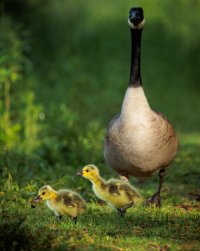
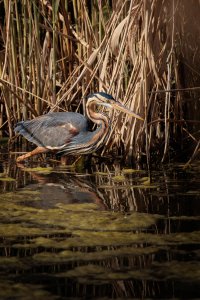
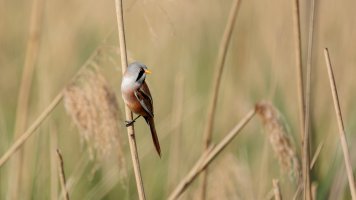
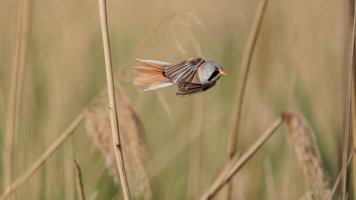
Thanks, I hadn't thought about that. If it had been shot sideways, cropped, and rotated, it might still look different from this, right?If it were due to rolling shutter both wings would be equally affected, as the bird is almost symmetrical left to right.
I love the last one!Canada goose with goslings, Purple heron, Bearded reedling.
These are from my first and second outings to a small area half an hour south of Heidelberg with the recently acquired RF800 f/11 on the R6.
With a bit of luck, there are some relative rarities staying here for a short time during migration, with the Purple herons staying for several weeks to raise their young.
I have not had any luck with the Bluethroats yet, but those are sure to become more active and visible as temperatures rise.
View attachment 216528
View attachment 216527View attachment 216526View attachment 216525
